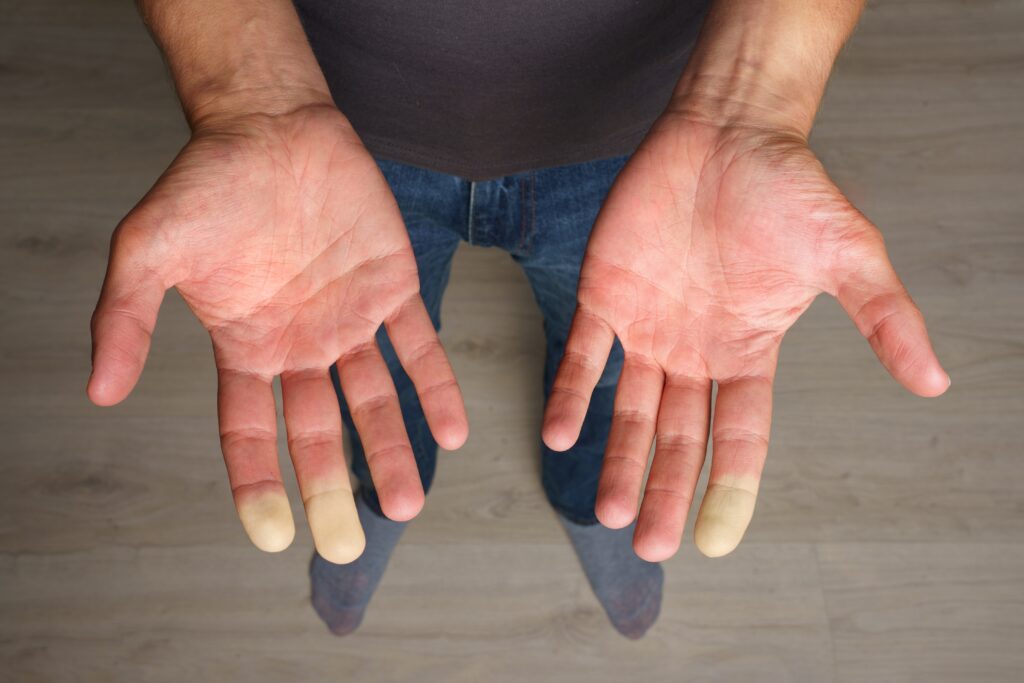Português (Portuguese) English Español (Spanish)
Cold Hands

Blood that flows into our hands usually travels by these two arteries and can cause cold hands when restricted.

Cyanosis, a process that happens with a cold hand disease

Necrosis in the fingertip happens when loss of blood flow happens repeatedly such as with cold hand diseases.
Causes
Blood that flows into our hands usually travels by two arteries: the radial artery and the ulnar artery (Figure 1). Cold hands are caused when blood flow is decreased to the hand. This can happen with a number of things, including:
Vasoconstriction
There are muscles around all the major arteries of our body that automatically constrict or relax in order to decrease or increase blood flow. This allows the body to send more blood and warmth to the critical organs of your body (like the heart, lungs and brain), temporarily decreasing the blood flow to your hands and feet. Cold hand diseases that occur from vasoconstriction happen when these muscles apply pressure to the arteries for too long, which decreases blood flow. This is what causes the fingers to turn a blue color (Figure 2) – a process called cyanosis. When the fingers are warmed up again, the increased blood flow causes a red color and painful fingers. After a while, the fingers return to their normal skin color, causing swelling and tingling.
If this loss of blood flow happens repeatedly, it can cause ulcers in the skin and tissue death (called necrosis, see Figure 3).
Vaso-occlusion
This happens when one or more of the blood vessels in the hand or wrist become blocked.
Diseases of blood vessels
There are many diseases of blood vessels that can cause vasoconstriction and vaso-occlusion. One of the most common is Raynaud’s Disease, during which there is an abnormal reaction in the hand when it is exposed to cold.
Signs and Symptoms
Some signs that you may have a cold hand disease include:
- Cold hands even in mild weather
- Pain in the fingers at cold temperatures
- The need to wear gloves when handling frozen foods
- Hands turning a white, blue or red color
- Problems healing minor wounds on fingertips
Treatment
Diagnosis
Your hand specialist will help you determine whether you have a disease and, if so, whether the cause of the disease is located in the blood vessels of the hand. If it is not, he or she will assist you in getting evaluated by other specialists (like a rheumatologist, a hematologist or an oncologist) to determine if you might have a cold hand-related systemic disease.
Treatment
Treatment for cold hands or related diseases can include:
- Adding behaviors that are helpful to blood flow, such as:
- Proper hand hygiene and skin care
- Wearing the correct warm and protective hand gear
- Healthy temperature regulation
- Quitting smoking
- Medication
- Steroid injections
- Surgery
Consult your hand surgeon to help you decide the best course of action.
If you’re experience issues with Raynaud’s Phenomenon, please book an appointment online or call our office at 707-273-3410.



